Introduction
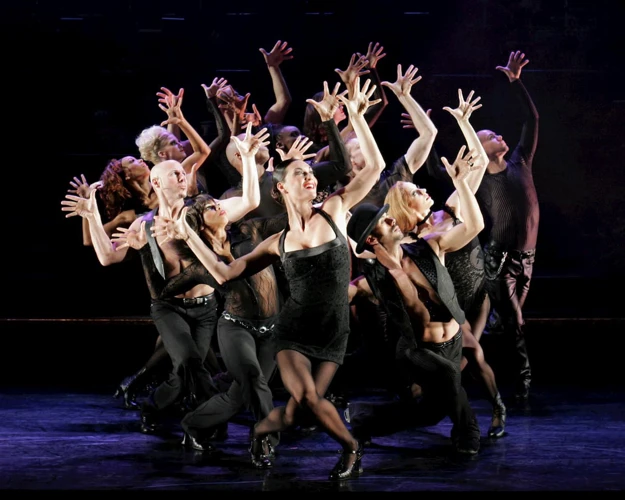
Jazz dance has been captivating audiences with its mix of energy, rhythm, and creativity for almost a century. From its early roots in African American communities to its evolution into the modern commercial dance industry, jazz dance has undergone many changes while never losing its unique identity. In this article, we’ll explore the fascinating history of jazz dance and the social, cultural, and musical influences that have shaped it into the art form we know today. So, let’s take a step back in time and dive into the world of jazz dance.
What is Jazz Dance?
Jazz dance is a type of dance that originated in the United States and is characterized by energetic and fluid movements. It is an expressive and improvisational dance style, which incorporates a range of techniques and movements from various dance styles such as ballet, modern dance, and African dance. Jazz dance has evolved over the years and has been influenced by various cultures and artistic movements.
The following are some features that define jazz dance:
- Emphasis on syncopated rhythms and beats
- Use of isolations – the movement of individual body parts independent of the rest of the body
- Improvisation – dancers can improvise and express their personal style
- Expressive movements – the use of facial expressions and gestures to express emotions
- Incorporation of various styles – jazz dance encompasses different styles such as swing, hip-hop, and contemporary dance
Jazz dance has a rich and fascinating history and has played an important role in American popular culture. From its early roots in African American culture, to its golden age in Hollywood, to its current status as a popular dance form, jazz dance has been a source of inspiration to dancers and audiences alike.
If you are interested in learning more about jazz dance, check out our beginners guide to jazz dance for tips, tricks, and essential techniques.
Early Roots of Jazz Dance
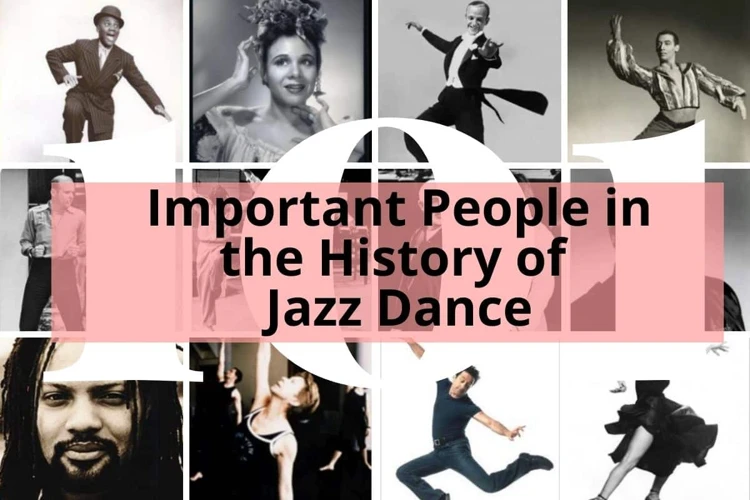
As we delve into the origins of jazz dance, it’s fascinating to discover how this style has been shaped by a wide range of cultural influences throughout history. From African American roots to the emergence of vaudeville, jazz dance has a fascinating history that has evolved over time. It’s important to take a closer look at these early roots to truly appreciate the unique and dynamic nature of jazz dance. To better understand the significance of jazz dance’s origins, it’s helpful to explore the impact of African American culture, as well as the influences of vaudeville and minstrel shows. This history can help us understand how jazz dance techniques have developed over time and evolved into the diverse styles that we see today.
African American Influences
Jazz dance originated from African American traditions and can be traced back to West African culture. The dance includes a lot of rhythmic movements, syncopated beats, and improvisation. These aspects were brought into America by African slaves, who used dance as a way to express their emotions and communicate with each other.
Drumming: One of the most influential elements in African dance is drumming. African slaves brought their drums with them to America and continued to play them, even after drumming was banned in many areas. The rhythms of African drumming heavily influenced jazz music and dance.
Social dances: Another important aspect of African dance is social dances. These are dances that are performed casually in social gatherings such as weddings and parties. The African American community continued to use dance as a form of communication and expression even after emancipation. They developed social dances such as “cakewalk” and “black bottom”, which were later incorporated into jazz dance.
Tap dance: Tap dance is a form of dance that involves using the feet to create rhythms and beats. It originated from African dance and was developed in America by African American communities. Tap dance heavily influenced jazz dance with its syncopated rhythms and percussive footwork.
Improvisation: Improvisation is a key element of jazz dance that was also inspired by African culture. In African dance, dancers would often improvise their movements based on the rhythms of the drumming. Jazz dancers adapted this by improvising their movements to the music, allowing for unique and individual expressions of the dance.
These African American influences laid the foundation for what would become jazz dance. They inspired the movements, rhythms, and improvisation that make jazz dance a unique and expressive form of dance that continues to be popular today. If you want to learn more about jazz dance techniques, check out 5 Essential Jazz Dance Techniques.
Minstrel Shows and Vaudeville
During the late 1800s and early 1900s, minstrel shows and vaudeville became popular forms of entertainment in the United States. The performers in these shows were predominantly white, and they often painted their faces black and caricatured African Americans in their performances. However, African American performers were able to join these shows and introduce their own styles and music.
It was in the minstrel shows and vaudeville that jazz dance began to mix with other dance styles, such as tap and ballet. Performers would often include comedic skits in their acts, incorporating dance and music to entertain audiences. African American performers like Bill “Bojangles” Robinson and Bert Williams brought elements of their own culture and dance styles to these shows, ultimately influencing the evolution of jazz dance.
Robinson, in particular, was known for his smooth and intricate tap dance routines, which he performed in both minstrel shows and Hollywood films. His style would go on to greatly influence tap dancing as a whole, inspiring future generations of dancers to incorporate jazz and tap into their performances.
Minstrel shows and vaudeville allowed for a mixing of cultures and styles, leading to the evolution of jazz dance as we know it today. Despite the problematic history surrounding these forms of entertainment, the influence of African American performers cannot be overlooked. Their contributions to jazz music and dance paved the way for future generations of dancers and continue to inspire new innovations in the art form.
The Golden Age of Jazz Dance
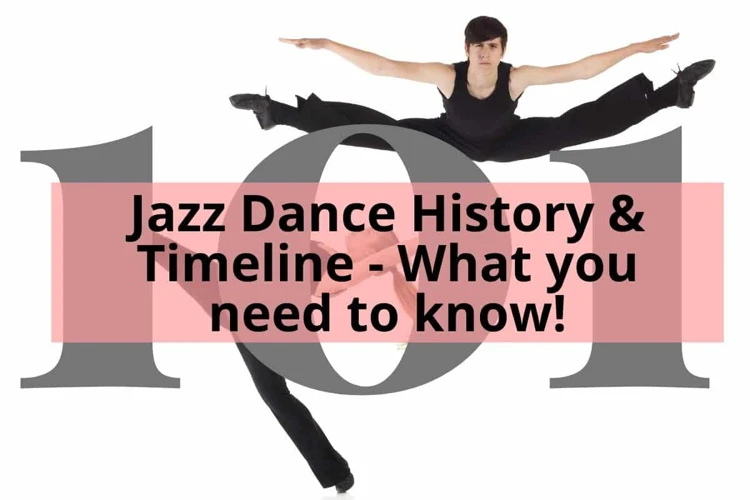
During the early 20th century, Jazz music began to emerge and rapidly became popular in the US. It was not long before dancing and music styles merged, giving birth to a new era of dance – The Golden Age of Jazz Dance. The age was marked by a series of remarkable dance moves that matched the fast-paced jazz music of that era. Some of the most influential jazz artists of the period created an exciting and dynamic culture that would later become a significant influence on popular music and other dance styles. Let’s take a closer look at how the Golden Age of Jazz Dance emerged and how it became an important influence on the entertainment industry.
The Birth of Swing Music
During the 1920s, jazz music began to evolve into a new style known as swing. This style was characterized by its emphasis on rhythm and the use of larger ensemble arrangements. Swing music soon became incredibly popular in America, especially among the youth, and sparked a new era of jazz dance.
Swing music provided a new musical foundation for jazz dance. It was faster and more dynamic than its predecessors, allowing for more energetic and intricate movements. The rise of swing also coincided with the advent of the big band, which provided a greater variety of music for dancers to work with.
One of the most significant aspects of swing music was its emphasis on improvisation. Musicians were encouraged to experiment and take solos, which allowed them to showcase their individual creativity and skill. This spirit of improvisation also found its way into jazz dance, where dancers began to incorporate spontaneous and unpredictable movements into their routines. Improvisation remains a defining feature of jazz dance to this day, and many dancers continue to work on their improvisational skills by taking improvisation classes and experimenting with different movement combinations.
Swing music also helped to popularize a number of new jazz dance styles. The Charleston, which had been popularized in the 1920s, was replaced by new dances such as the Lindy Hop and the Jitterbug. These dances were more complex and physically demanding than their predecessors, requiring dancers to be faster, more agile and more coordinated. A number of famous jazz dancers emerged during this period, including Norma Miller, Dean Collins and Frank Manning, who became known for their incredible speed, agility and creativity on the dance floor.
The birth of swing music had a profound impact on jazz dance. It helped to establish jazz dance as a distinct art form and sparked a new era of creativity and innovation. Today, jazz dance continues to draw on the legacy of swing music and remains an important influence on contemporary dance performances. To learn more about the role of jazz dance in contemporary performances, check out our article on the influence of jazz music on jazz dance.
Popular Jazz Dance Styles of the 1920s and 30s
During the 1920s and 30s, jazz dance exploded in popularity as it became more integrated into American culture. Some of the poplar jazz dance styles during this era include:
- The Charleston: This lively dance style became popular in the 1920s and was characterized by quick, sharp movements and swaying arms. It was often danced to upbeat jazz music and was featured in many films and stage productions at the time.
- The Lindy Hop: Known for its energetic and acrobatic moves, the Lindy Hop was a partner dance that originated in Harlem, New York in the late 1920s.
- The Jitterbug: A swing dance that emerged in the 1930s, the Jitterbug was similar to the Lindy Hop but with less acrobatics and more of a focus on the movements of the feet.
- Tap Dance: Although not exclusively a jazz dance style, tap dance became increasingly popular during this era and was often performed to jazz music. It involved creating rhythmical beats and sounds with metal taps attached to the bottom of the dancer’s shoes.
These jazz dance styles were often performed in clubs, dance halls, and on Broadway stages, as well as in films and musicals. The influence of jazz music on jazz dance during this time was evident, with the fast-paced and rhythmic beats inspiring dancers to move in sync with the music. The popularity of jazz dance styles continued to grow through the 1930s, eventually leading to the rise of Hollywood musicals in the next decade.
Jazz Dance in Hollywood
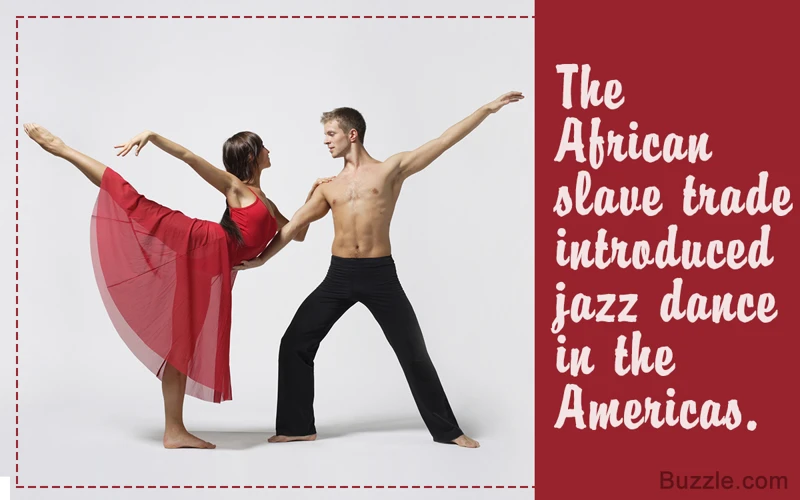
As jazz music gained popularity in the United States, it began to make its way into Hollywood films. Jazz dance in Hollywood was not only a form of entertainment but also a way for filmmakers to showcase the latest dance crazes of the time. The influence of jazz dance in Hollywood can still be seen in modern musicals, inspiring choreographers to create new and innovative routines. In addition to its influence on the film industry, jazz dance has also had a significant impact on costume and fashion design. We will explore the history and influences of jazz dance in Hollywood, including the legacy of legendary choreographer Bob Fosse. To know more about the difference between jazz dance and other dance styles, check out this article. Additionally, find helpful jazz dance tips and tricks in this article and learn about the significance of costume and fashion in jazz dance in this article.
Musical Films of the 1940s and 50s
During the 1940s and 1950s, jazz dance continued to gain prominence thanks to the popularity of musical films. Some of the most iconic dancers of the era, such as Gene Kelly and Fred Astaire, incorporated jazz dance into their routines and helped to popularize the style even further.
The following table highlights some of the most significant musical films of the time:
| Film Title | Year Released | Key Jazz Dance Numbers |
|---|---|---|
| The Wizard of Oz | 1939 | “The Jitterbug” |
| An American in Paris | 1951 | The final ballet sequence |
| Singin’ in the Rain | 1952 | The titular dance number, as well as “Good Morning” |
| Seven Brides for Seven Brothers | 1954 | The “Barn Dance” sequence |
| West Side Story | 1961 | The iconic opening dance sequence, as well as other ensemble pieces |
These films, and others like them, showcased the vibrancy and athleticism of jazz dance in a way that had never been seen before. Jazz dance became incredibly popular among audiences around the world, and its influence could be seen in other areas of popular culture as well, from fashion to music videos.
The influence of Hollywood on jazz dance is still evident today, and the legacy of the era’s most influential dancers and choreographers continues to inspire new generations of artists.
The Legacy of Bob Fosse
Bob Fosse is one of the most influential choreographers in the history of jazz dance. His unique style combined elements of jazz, ballet, and burlesque, creating a sensual and provocative form of dance that captivated audiences.
Fosse’s legacy can be seen in the many dancers and choreographers who have been inspired by his work. Here are some of the key elements of Fosse’s style:
Isolation: Fosse was a master of isolating different parts of the body and creating subtle but powerful movements. His dancers often moved in a stylized, mechanical way, with jerky movements and sharp angles.
Props: Fosse often incorporated props into his choreography, such as hats, canes, and chairs. This added an extra element of visual interest and allowed his dancers to create a more dynamic performance.
The Bowler Hat: One of Fosse’s most iconic props was the bowler hat. He used this stylistic choice as a way to add a touch of humor and whimsy to his performances.
Sexualization: Fosse’s choreography often had a sensual and provocative quality, with his dancers moving in a way that was both alluring and daring.
The Turn-In: Another key element of Fosse’s style was his use of the turn-in. This involved rotating the legs inward and emphasizing the hips, which added to the sensuality of the performance.
Fosse’s legacy in jazz dance is immense. His style has influenced countless dancers and choreographers, and his iconic choreography continues to be performed today.
Modern Jazz Dance
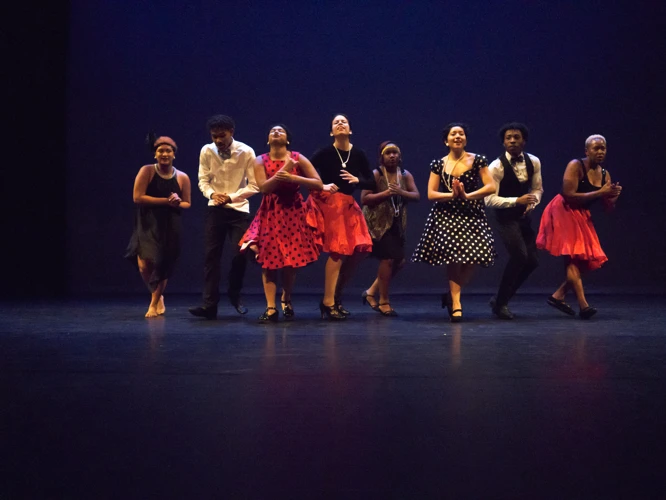
As we enter the modern era, jazz dance has continued to evolve and diversify. From contemporary fusion styles to commercial routines seen on popular shows, the world of jazz dance has taken on new life in recent decades. The innovative choreography and diverse influences behind modern jazz dance have pushed the boundaries of what is possible on stage and screen. Let’s take a closer look at the current state of jazz dance and the various forms it has taken in the modern era.
Contemporary Jazz Dance
Contemporary jazz dance is a style that emerged in the late 20th century and is still evolving today. It is characterized by its fusion of various dance styles such as ballet, modern, hip-hop, and even street dance. The choreography is often improvisational and emphasizes individual expression and interpretation of the music.
One of the key figures in the development of contemporary jazz dance is Alvin Ailey, who founded the Alvin Ailey American Dance Theater in 1958. Ailey’s choreography blended elements of ballet, modern and jazz dance to create a unique style that reflected the civil rights movement and the African American experience.
Contemporary jazz dance also draws influences from postmodern dance, which emphasizes the use of everyday movements rather than formal dance vocabulary. This focus on natural movement adds an element of authenticity and individualism to the choreography.
Another important element of contemporary jazz dance is the music. While traditional jazz dance is associated with swing music, contemporary jazz dance incorporates a broad range of music styles from classical to electronic, adding to the versatility and adaptability of the genre.
Contemporary jazz dance has been popularized through television shows such as So You Think You Can Dance, where it is often used in group numbers and as a way for dancers to showcase their unique style and creativity.
Here is a table highlighting some of the key features of contemporary jazz dance:
| Key Features of Contemporary Jazz Dance |
|---|
| Fusion of dance styles |
| Improvisational choreography |
| Emphasis on individual expression |
| Influence from postmodern dance |
| Wide range of music styles |
| Popularized through television shows |
Commercial Jazz Dance
Commercial jazz dance refers to the style of jazz dance that is commonly seen in music videos, commercials, and on tour with pop stars. This style often incorporates elements of hip-hop, street dance, and contemporary dance, and is highly stylized and energetic.
Characteristics of Commercial Jazz Dance
Commercial jazz dance has several defining characteristics that set it apart from other styles of jazz dance. These include:
| Characteristic | Description |
|---|---|
| High energy | Commercial jazz dance is known for its high-energy movements, often incorporating jumps, turns, and complex footwork. |
| Syncopated rhythms | Like other styles of jazz dance, commercial jazz dance is heavily influenced by swing music and incorporates syncopated rhythms into the movements. |
| Isolations | Commercial jazz dance incorporates isolations, or the deliberate movement of specific parts of the body, such as the head, shoulders, or hips. |
| Sharp movements | Movements in commercial jazz dance are often sharp and precise, with a focus on hitting specific beats or musical accents. |
| Stylized poses | Commercial jazz dance often incorporates stylized poses or gestures that add to the overall effect of the choreography. |
| Emphasis on performance quality | Commercial jazz dance is often performed with a great emphasis on performance quality, including facial expressions and stage presence. |
Popularity of Commercial Jazz Dance
Commercial jazz dance has become increasingly popular in recent years due to its presence in popular media. Many music videos and live performances feature commercial jazz dance routines, and the style continues to evolve and adapt to new trends in both dance and music.
Training in Commercial Jazz Dance
Many dance studios offer classes in commercial jazz dance, which are often geared toward dancers looking to audition for music videos, commercials, or touring shows. These classes typically focus on mastering the stylized and sometimes complex movements of the style, as well as building the stamina and performance quality needed to succeed in the industry.
Commercial jazz dance is a highly stylized and exciting style of dance that continues to grow in popularity thanks to its presence in popular media. Dancers looking to break into the industry can benefit from training in this style, as it is a valuable and sought-after skill for many commercial dance opportunities.
The Future of Jazz Dance
As we gaze toward the horizon of the ever-evolving art form that is jazz dance, we can’t help but wonder what the future holds. What new innovations will emerge and how will this timeless dance style continue to adapt to the changing cultural and artistic landscape? With a mixture of excitement and uncertainty, we explore the possibilities and potential of Jazz dance in the coming years. Let’s delve into the realm of what’s to come, and discover where jazz dance may go from here.
New Innovations in Jazz Dance
Jazz dance, like all art forms, is constantly evolving. Today, jazz dance is a complex dance genre enriched with contemporary and popular dance styles. There are several new innovations in jazz dance that have emerged over the years.
One example of a new innovation in jazz dance is the fusion of jazz dance with ballet and contemporary dance. This fusion showcases a blend of sharp, defined movements, with fluid and seamless transitions characteristic of contemporary dance styles. Dancers who execute this style often move with a sense of urgency and empowerment, emphasizing strength and athleticism. This genre is commonly referred to as jazz-contemporary or jazz-fusion.
Another innovation in jazz dance has been the increasing use of improvisation. Unlike traditional jazz dance, where routines are choreographed in advance and dancers repeat them, improvisation allows a dancer to express themselves freely and create their movements spontaneously. Improvisation, combined with Jazz dance, allows for a unique and dynamic performance.
Additionally, jazz dance has also incorporated many elements of hip-hop dance, creating a subgenre known as jazz-funk. Jazz-funk combines the syncopation and musicality of jazz with the funk-inspired grooves and rhythmic movements of hip-hop dance. This style is characterized by bold, high-energy movements, and often includes elements of popping, locking, and breaking.
Lastly, technology has also played a significant role in the evolution of jazz dance. Today, many jazz dancers use music visualization software or projection mapping technology to enhance their performances. This type of technology allows for the creation of intricate visuals that are seamlessly interwoven into a dance routine, producing an immersive visual experience for the audience.
The new innovations in jazz dance continue to push the boundaries of the art form, creating new styles and performance styles that blend traditional styles and contemporary movements with cutting-edge technology. These new styles challenge dancers to develop their skills and explore new forms of expression.
| New Innovations in Jazz Dance |
|---|
| Jazz-fusion: Combines jazz dance with ballet and contemporary styles, showcasing defined movements with fluid transitions. |
| Improvisation: Allows for free expression and spontaneous movement creation during jazz dance performances. |
| Jazz-funk: Incorporates elements of hip-hop dance, involving funky groove styles, and high-energy movements with a hint of jazz. |
| Technology: Uses music visualization software and projection mapping to create immersive visuals that are seamlessly interwoven into a dance routine. |
Jazz Dance in Popular Culture
The popularity and influence of jazz dance can be seen in many aspects of pop culture today. From music videos to Broadway shows, jazz dance has made its way to the forefront of modern entertainment, constantly evolving and pushing boundaries.
One of the most prominent examples of jazz dance in popular culture is television and film. From the iconic ’90s sitcom “Fresh Prince of Bel-Air” to modern-day hits like “Glee” and “Dancing with the Stars,” jazz dance has become a staple in mainstream media.
Television programs featuring dance, such as “So You Think You Can Dance,” have garnered a huge following and helped to propel jazz dance into the spotlight.
In addition to television and film, jazz dance has also influenced the music industry. Many popular music videos feature intricate jazz dance choreography, from Beyonce’s “Single Ladies” to Justin Timberlake’s “Suit and Tie.”
Jazz dance has become synonymous with style and sophistication in music videos, giving the art form a mainstream appeal.
Broadway musicals have also played a significant role in the evolution of jazz dance in popular culture. Shows like “Chicago” and “Cats” have brought jazz dance to the forefront of Broadway, pushing the boundaries of what is possible on a theatrical stage.
The incorporation of jazz dance into mainstream Broadway productions has helped to showcase its unique style and creativity to audiences around the world.
The impact of jazz dance on popular culture cannot be overstated. From its humble beginnings in African American communities to its current status as a major force in modern-day entertainment, jazz dance has inspired countless generations of dancers and audiences alike.
With the continued evolution and innovation of jazz dance, its influence on popular culture is sure to endure for years to come.
| Examples | Medium |
|---|---|
| “Fresh Prince of Bel-Air” | Television |
| “So You Think You Can Dance” | Television |
| Beyonce’s “Single Ladies” | Music Video |
| Justin Timberlake’s “Suit and Tie” | Music Video |
| “Chicago” | Broadway Musical |
| “Cats” | Broadway Musical |
Conclusion
After exploring the rich history of jazz dance and its various forms, it is clear that this dance style continues to captivate audiences around the world with its unique blend of rhythm, style, and movement. From its early roots in African American culture to its modern-day expressions in contemporary and commercial styles, jazz dance has undergone many transformations over the years.
One thing that has remained constant, however, is the energetic and passionate spirit of the dance. Whether in its traditional swing and tap forms, or its more contemporary expressions, jazz dance has always been characterized by its ability to convey a sense of joy and inspiration in the performers and the audience alike.
Looking to the future of jazz dance, it will be interesting to see how this style continues to evolve and innovate with new technologies and cultural influences. With the rapid pace of technological advancements and the growing impact of globalization, there are endless opportunities for jazz dance to continue to expand and grow, potentially reaching new audiences and gaining even greater recognition as an influential art form.
Ultimately, the significance of jazz dance lies not only in its cultural and historical significance, but also in its ability to bring people together through the universal language of music and movement. As long as there are dancers, musicians, and audiences around the world who are passionate about jazz dance, this unique and captivating dance style will continue to thrive and inspire generations to come.
Preguntas frecuentes
What makes Jazz Dance unique?
Jazz Dance is unique in its focus on rhythm, improvisation, and individual expression.
How did Jazz Dance originate?
Jazz Dance originated in African American communities in the early 20th century, blending elements of traditional African dances, European partner dances, and social dances of the era.
What were some popular Jazz Dance styles of the 1920s and 30s?
Popular styles included The Charleston, The Black Bottom, and The Lindy Hop.
Who were some influential Jazz Dance choreographers during Hollywood’s Golden Age?
Bob Fosse, Gene Kelly, and Fred Astaire were all influential choreographers during this era.
What is Contemporary Jazz Dance?
Contemporary Jazz Dance combines elements of classical ballet, modern dance, and traditional jazz dance styles.
What is Commercial Jazz Dance?
Commercial Jazz Dance is a style used in music videos and commercial performances, often characterized by quick, high-energy movements.
How has Jazz Dance influenced other dance styles?
Jazz Dance has been influential in the development of several other dance styles including hip-hop, modern dance, and musical theater dance.
What is the future of Jazz Dance?
Jazz Dance continues to evolve, with new innovations in music and dance being explored by contemporary choreographers and dancers.
How has Jazz Dance been portrayed in popular culture?
Jazz Dance has been featured prominently in movies, television shows, and music videos, contributing to its popularity and cultural significance.
What skills are important for Jazz Dance?
Important skills for Jazz Dance include agility, musicality, coordination, and a strong sense of rhythm.

